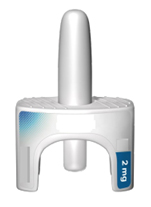
In August 2024, the FDA approved a 2 mg epinephrine nasal spray for the emergency treatment of anaphylaxis in children and adults weighing at least 30 kg. The product became the first and only needle-free treatment option for anaphylaxis in the United States and included it in the list of epinephrine injection products approved for the treatment of anaphylaxis.
The FDA approval was based on four studies that measured epinephrine concentrations in the blood of 175 healthy adults, without anaphylaxis, after administration of epinephrine spray or other approved epinephrine injection products. Results from these studies showed that epinephrine nasal spray provided epinephrine blood concentrations comparable with approved epinephrine injection products. Also, it showed similar increases in blood pressure and heart rate as epinephrine injection products. A study in children weighing more than 30 kg demonstrated that epinephrine concentrations in children were similar to adults who received epinephrine nasal spray.
A study was also conducted to evaluate the pharmacokinetic and pharmacodynamic of a repeat dose of epinephrine nasal spray in patients with allergic rhinitis (nasal congestion and runny nose). The results indicated that the pharmacokinetic and pharmacodynamic profiles of epinephrine nasal spray were greater than with intramuscular injection under these conditions. There was also greater absorption of epinephrine with repeated dosing in the same nostril compared with single dosing in each nostril and with intramuscular injection.
The results of the studies showed that the side effects of epinephrine nasal spray were generally mild, and no serious adverse events were reported. The most common side effects were throat irritation, tingling nose, nasal discomfort, nasal congestion, fatigue, headache, tremor, runny nose, itchy nose, sneezing, abdominal pain, gum pain, numbness in the mouth, dizziness, nausea and vomiting.
The product consists of two single-dose nasal spray devices. Each device is a single dose of 2 mg epinephrine administered in one nostril. As with epinephrine auto-injector products, if symptoms continue or get worse after the first dose, a second dose can be administered in the same nostril using a new nasal spray starting 5 minutes after the first dose. Patients should seek emergency treatment after using epinephrine nasal spray.
However, some nasal conditions, such as nasal polyps or a history of nasal surgery, may affect epinephrine absorption, so patients with these conditions should consult an allergist to consider using an epinephrine auto-injector.
